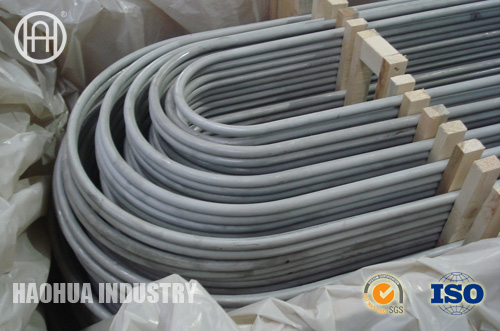


Heat Transfer by Heat Exchangers - U Tubes
HEAT EXCHANGER U TUBES
As the Haohua Industry largest finned tube manufacturer and supplier of plain heat exchanger tubes for over 35 years we have developed a large network of contacts within the heat exchanger tube business. We supply both seamless and welded tubes in carbon steel, alloy steel, stainless steel, non-ferrous alloys, nickel alloys and titanium..
Our on-site u-bending facility allows us to provide quick turnaround of these materials if u-bending is required.Our commitment to on-time delivery and supply of high-quality material has enabled us to build lasting relationships with engineering companies and end users right across the globe.
To find out more about Heat Exchanger Tubes, and get more information please fill out or enquiry form and one of our sales representatives will contact you.
U TUBES
Profins’ in-house tube manipulation facility enables us to offer rapid turnaround times on all heat exchanger requirements in any material.All U tubes are manufactured in accordance with TEMA R specifications.Our competitive prices, rapid quotations and bespoke packing ensure we consistently deliver the highest quality of service.
Carbon SteelAustenitic/Ferritic StainlessDuplex/Super DuplexAll Nickel AlloysTitaniumCopper NickelAluminium Brass
All materials are hydro-tested as standard. Stress relieving is carried out in a gas-fired furnace or solution annealed using an induction heat process. We can offer a range of additional testing on request, including dye penetrant and PMI testing.
Profins packs all U Tube bundles in bespoke wooden boxes and separate all U Tubes of different radii using finger pallets to facilitate easy assembly of bundles on receipt.
Heat Exchanger tubes
Tubing that is generally used in TEMA sizes is made from low carbon steel, copper, Admiralty, Copper-Nickel, stainless steel, Hastalloy, Inconel, titanium and a few others. It is common to use tubing from 5/8" to 1-1/2" in these designs.Tubes are either generally drawn and seamless or welded. High quality ERW (electro-resistance welded) tubes exhibit superior grain structure at the weld. Extruded tube with low fins and interior rifling is specified for certain applications. Surface enhancements are used to increase the available metal surface or aid in fluid turbulence, thereby increasing the effective Heat Transfer rate. Finned tubing is recommended when the shell side fluid has a substantially lower Heat Transfer coefficient than the tube side fluid. Finned tubing has an outside diameter in the finned area slightly under the unfinned, or landing area for the tube sheets. This is to allow assembly by sliding the tubes through the baffles and tube supports while minimizing fluid bypass.U-tube designs are specified when the thermal difference of the fluids and flows would result in excessive thermal expansion of the tubes. U-tube bundles do not have as much tube surface as straight tube bundles, due to the bending radius, and the curved ends cannot be easily cleaned. Additionally, interior tubes are difficult to replace, many times requiring the removal of outer layers, or simply plugging the tube. Because of the ease in manufacturing and service, it is common to use a removable tube bundle design when specifying U-tubes.
Typical U-Tube Bundle
Tubesheets of Heat Exchangers
Tubesheets are usually made from a round flat piece of metal with holes drilled for the tube ends in a precise location and pattern relative to one another. Tube sheet materials range as tube materials. Tubes are attached to the tube sheet by pneumatic or hydraulic pressure or by roller expansion. Tube holes can be drilled and reamed and can be machined with one or more grooves. This greatly increases the strength of the tube joint.
The tubesheet is in contact with both fluids and so must have corrosion resistance allowances and have metalurgical and electrochemical properties appropriate for the fluids and velocities. Low carbon steel tube sheets can include a layer of a higher alloy metal bonded to the surface to provide more effective corrosion resistance without the expense of using the solid alloy.
The tube hole pattern or "pitch" varies the distance from one tube to the other and angle of the tubes relative to each other and to the direction of flow. This allows the manipulation of fluid velocities and pressure drop, and provides the maximum amount of turbulance and tube surface contact for effective Heat Transfer.
Typical Tube Sheet
Where the tube and tube sheet materials are joinable, weldable metals, the tube joint can be further strengthened by applying a seal weld or strength weld to the joint.A strength weld has a tube slightly reccessed inside the tube hole or slightly extended beyond the tube sheet. The weld adds metal to the resulting lip.A seal weld is specified to help prevent the shell and tube liquids from intermixing. In this treatment, the tube is flush with the tube sheet surface. The weld does not add metal, but rather fuses the two materials.In cases where it is critical to avoid fluid intermixing, a double tube sheet can be provided. In this design, the outer tube sheet is outside the shell circuit, virtually eliminating the chance of fluid intermixing. The inner tube sheet is vented to atmosphere so any fluid leak is easily detected.
